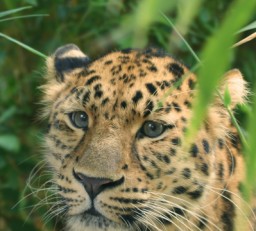Veterinary support for Amur tigers and leopards – an update
31/10/2013
Normally at this time of year, WVI vet and big cat expert John Lewis, is towards the end of his annual trip to Russia to continue the training of local vets and teams which deal with tigers in conflicts situations as well as tigers studied in the wild. Normally at this time of year, WVI vet and big cat expert John Lewis, is towards the end of his annual trip to Russia to continue the training of local vets and teams which deal with tigers in conflicts situations as well as tigers studied in the wild.

In April this year, the Russian government’s Working Group for Monitoring Amur Tigers prohibited the use of the Aldrich snare (a snare used internationally for catching animals for research) for catching Amur tigers and leopards for research purposes. They can still be used to catch conflict tigers. The ban has not been revoked so John will not be making a trip to the field this year. However, John has been and will continue to support colleagues in Russia via the internet.
Earlier this year, John attended a conference in Moscow that discussed the keeping and breeding of Amur leopards and tigers in captivity. The aim is to potentially reintroduce Amur leopards; creating a second population in their natural habitat. In order to have the right leopards available for reintroduction, it is important to maintain populations of these rare cats with high genetic diversity. Funds raised by Photography for Big Cats CIC earlier this year have contributed to these initiatives.
Not going to Russia will allow John time to work on the data he has acquired, from captive and wild Amur leopards. All mortality data from captive leopards in America, Eurasia and Japan are put in the Amur Leopard Veterinary Database as well as all health data from the field.The database has been developed especially for this project to enable mortality data to be compared between collections, countries, regions, and time periods. This will give John a feel for what captive leopards die of and relate that to conditions in the wild. It is important that new diseases are not introduced to the area through the reintroduction project.

While WVI’s developments in Russia are currently slow, a project related to health issues, encountered in Amur leopard and tiger territory, and many other parts of the world, is currently going full speed ahead in Sumatra. During field training earlier this year, John heard of reports of tigers behaving in a similar way to those confirmed with Canine Distemper Virus (CDV) in Russia.
Having expressed his thoughts there was wide support for an island wide tiger disease surveillance programme, the first of its kind. In September a workshop thrashed out the details of such a programme, which will be overseen by the newly formed Sumatran Tiger Health Forum.
WVI feels it is very important that such an initiative is developed and run by in-country agencies and not by international NGOs. Therefore the Forum will be coordinated and supported by Taman Safari International, Indonesian Veterinary Medicine Association and the Indonesian Department of Forestry with expert help from WVI and others where needed. This model has been applied in Russia and now in Sumatra.
Although this work is not in Russia, lessons will be learned that are directly applicable to the Amur leopards and tigers, where the problem of canine distemper for big cats was confirmed this year.
As CDV is a health risk that effects big cats across various countries, it will not be possible to tackle this in isolation for any leopard or tiger species, and the island wide surveillance programme in Sumatra will be of great help to big cat populations in Russia and in Bangladesh.
Funds permitting, WVI hopes to set up a similar initiative in Bangladesh next year, and activities in Russia are always ongoing.
Olivia Walter – Wildlife Vets International
Published in Photography for Big Cats Newsletter October 2013
WVI has been lucky enough to learn from Barbara Meyer at two fundrasing events in September 2013. The first at Heythrop Zoological Gardens and then at International Tiger and Leopard Day at Yorkshire Wildlife Park.
Our effort would have not have been nearly so productive without her experience and our Amur tiger and leopard projects are definitely better off.

As well as being a font of all knowledge on tiger and leopard conservation, Barbara is an excellent photographer. Not only does she sell her pictures as badges, magnets or as prints but takes people on photographic courses to zoos around the country and giving talks on taking pictures of wildlife.
For more information, please see her website.
WVI would like to thank Barbara for the £1,797.69 that she raised in 2013 and hopes she continues to support us in 2014.
.png)
.png)

.png)
.png)







.png)






.png)
.png)




.png)


